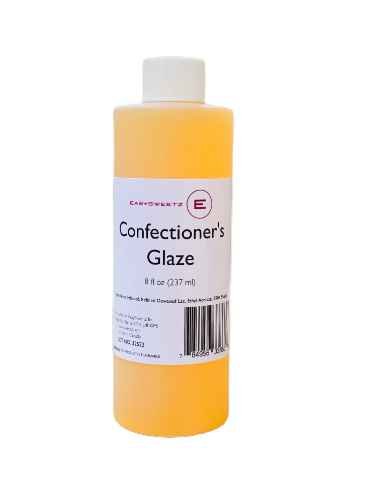Confectioner’s glaze, also known as shellac, is a popular coating used in the food industry to give products a shiny appearance and preserve them for longer periods. It is made from the secretions of the female lac bug, which is native to India and Thailand. The secretion is collected, processed, and then made into a resin, which is used to make confectioner’s glaze. But the question remains: is confectioner’s glaze vegan?
Veganism is a way of living that seeks to exclude, as far as possible and practical, all forms of exploitation and cruelty to animals for food, clothing, or any other purpose. Vegans do not consume or use animal products or by-products, and they often look for alternatives to traditional animal-derived products, such as leather and wool.
Confectioner’s glaze is a complex topic when it comes to veganism. While it is derived from an insect, it is not an animal product in the traditional sense. The lac bug is not killed or harmed during the harvesting process, as the resin is collected from trees where the insects naturally reside. However, some vegans may choose to avoid confectioner’s glaze because of its connection to an insect, while others may be more lenient in their interpretation of veganism.
In this article, we will explore the question of whether confectioner’s glaze is vegan by examining its production process, potential animal harm, and alternatives for vegans who wish to avoid it.
What is Confectioner’s Glaze?
Confectioner’s glaze is a clear, glossy, and protective coating made from the resin secreted by the female lac bug. The resin is collected from the trees where the insects reside and is then processed to remove impurities and create a pure, refined shellac. The final product is a resin that is dissolved in alcohol and then sprayed onto food products to give them a shiny appearance and protect them from moisture and other environmental factors.
Confectioner’s glaze is commonly used in the food industry to coat candies, chocolates, nuts, and other foods. It is also used in non-food products, such as pharmaceuticals and cosmetics, as a coating or binding agent.
Is Confectioner’s Glaze Vegan?
The question of whether confectioner’s glaze is vegan is complicated, as it depends on how one defines veganism. From a technical standpoint, confectioner’s glaze is not an animal product in the sense that it is not derived from the flesh or bodily fluids of an animal. However, it is derived from the secretions of an insect, which some vegans may choose to avoid due to ethical concerns.
The lac bug is not killed or harmed during the harvesting process, as the resin is collected from the trees where the insects naturally reside. The insects are not farmed, and they are not intentionally killed or harvested for their secretions. However, the fact that the resin is derived from an insect may be enough for some vegans to choose to avoid confectioner’s glaze.
Some vegans may also choose to avoid confectioner’s glaze because of the potential harm to other animals that may occur as a result of its production. The harvesting of lac resin requires the use of certain trees, which can disrupt the habitats of other animals that rely on those trees. Additionally, the use of alcohol in the production of confectioner’s glaze may be problematic for some vegans, as alcohol may be derived from animal products such as gelatin or isinglass.
Alternatives to Confectioner’s Glaze for Vegans
For vegans who wish to avoid confectioner’s glaze, there are several alternatives available. One of the most popular alternatives is carnauba wax. Carnauba wax is a natural plant-based wax that is derived from the leaves of the carnauba palm tree, which is native to Brazil. The wax is harvested by drying and crushing the leaves of the tree, which releases the wax. It is then refined and processed to create a high-quality wax that can be used as a coating for food products. Carnauba wax is a vegan-friendly alternative to confectioner’s glaze that is commonly used in the food industry to coat candies, chocolates, and other foods.
Another alternative to confectioner’s glaze is soy-based wax. Soy wax is made from soybean oil, which is extracted from soybeans, and is commonly used as a replacement for traditional paraffin wax. Soy wax can also be used as a coating for food products, although it may not provide the same level of gloss and durability as other coatings.
Other vegan-friendly coatings that can be used in place of confectioner’s glaze include vegetable-based gums such as gum arabic and cellulose, which are often used to coat pharmaceutical tablets and capsules. These coatings provide a similar protective barrier to confectioner’s glaze and are derived from plant-based sources.
Conclusion
In conclusion, the question of whether confectioner’s glaze is vegan is complicated, as it depends on how one defines veganism. From a technical standpoint, confectioner’s glaze is not an animal product in the traditional sense, as it is derived from the secretions of an insect and not the flesh or bodily fluids of an animal. However, some vegans may choose to avoid confectioner’s glaze due to ethical concerns regarding the use of insects in food production.
For vegans who wish to avoid confectioner’s glaze, there are several alternatives available, including carnauba wax, soy-based wax, and vegetable-based gums. These coatings provide a similar level of protection and gloss to confectioner’s glaze and are derived from plant-based sources, making them suitable for vegans.
Ultimately, the decision of whether to consume products containing confectioner’s glaze is up to individual vegans and their interpretation of veganism. However, it is important to understand the production process and potential ethical concerns associated with confectioner’s glaze and to be aware of the alternatives available for those who wish to avoid it.

